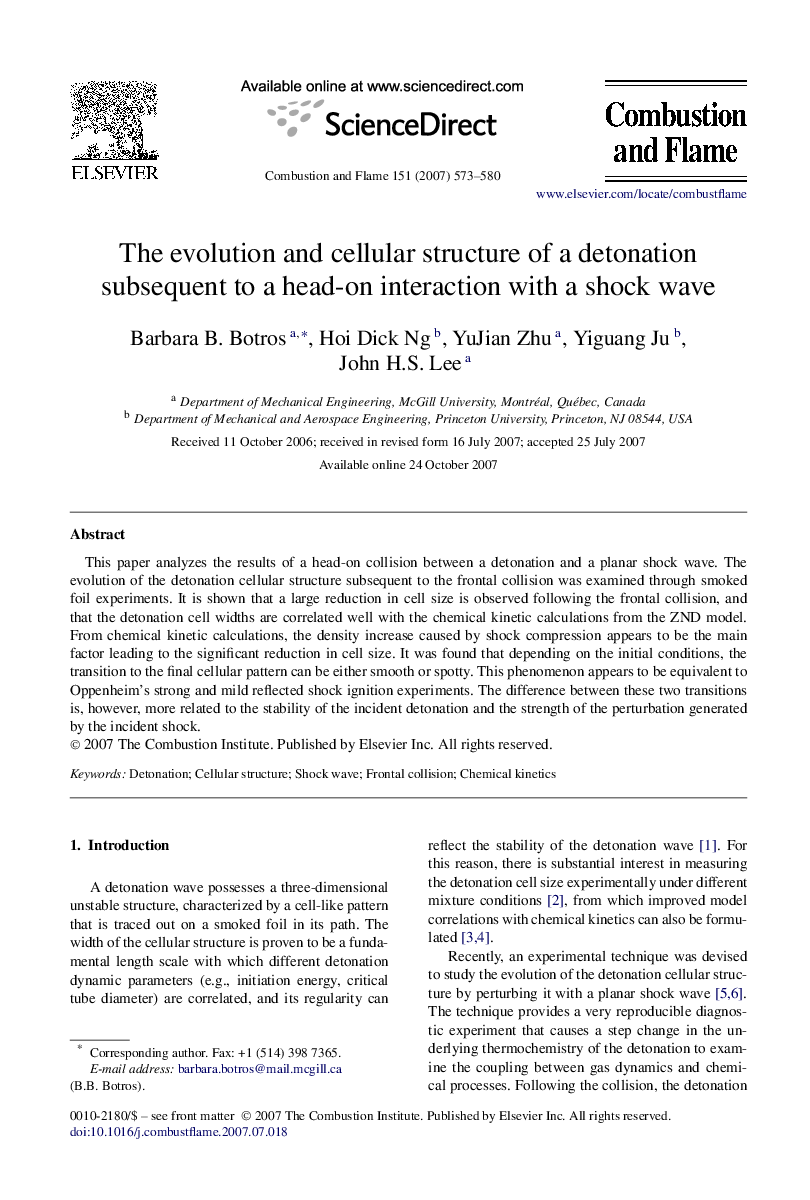| Article ID | Journal | Published Year | Pages | File Type |
|---|---|---|---|---|
| 170050 | Combustion and Flame | 2007 | 8 Pages |
This paper analyzes the results of a head-on collision between a detonation and a planar shock wave. The evolution of the detonation cellular structure subsequent to the frontal collision was examined through smoked foil experiments. It is shown that a large reduction in cell size is observed following the frontal collision, and that the detonation cell widths are correlated well with the chemical kinetic calculations from the ZND model. From chemical kinetic calculations, the density increase caused by shock compression appears to be the main factor leading to the significant reduction in cell size. It was found that depending on the initial conditions, the transition to the final cellular pattern can be either smooth or spotty. This phenomenon appears to be equivalent to Oppenheim's strong and mild reflected shock ignition experiments. The difference between these two transitions is, however, more related to the stability of the incident detonation and the strength of the perturbation generated by the incident shock.
